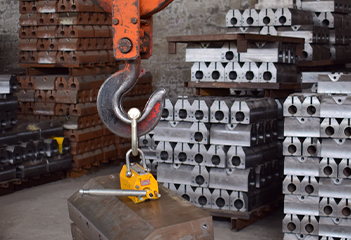Innovative Solutions for Efficient Material Handling with Rail Mounted Crane Systems
Rail Mounted Cranes An Overview of Their Applications and Benefits
Rail mounted cranes are an essential component in various industrial settings, particularly in shipyards, warehouses, and construction sites. These cranes are designed to travel along tracks, allowing for efficient material handling and heavy lifting across considerable distances. Their versatility in operations and ability to maneuver in confined spaces highlight their importance in modern logistics and heavy industry.
One of the primary advantages of rail mounted cranes is their ability to handle large loads. They are engineered to lift significant weights, making them ideal for moving heavy equipment, containers, and raw materials. This capability is particularly beneficial in environments such as ports, where massive shipping containers must be moved on and off vessels frequently. By utilizing rail mounted cranes, port operations can enhance their efficiency, reduce turnaround times for ships, and ultimately decrease operational costs.
In addition to their load-bearing capacity, rail mounted cranes offer superior stability and safety, which are critical factors in high-risk lifting operations. The design of these cranes allows them to remain firmly grounded on the tracks, minimizing the risk of tipping or swaying during operation. This stability is paramount when lifting heavy or awkwardly shaped loads, where even a slight movement can result in accidents or damage. Additionally, modern rail mounted cranes are equipped with advanced safety features, such as overload sensors and automatic braking systems, to further enhance operational safety.
rail mounted crane

Another significant benefit of rail mounted cranes is their efficiency in spatial utilization. In environments where floor space is limited, such as in manufacturing plants or busy docks, these cranes can navigate along fixed tracks without requiring additional ground space for maneuvering. This feature allows for maximized workflow and optimal organization of operations. Moreover, rail mounted cranes can operate in tandem with other lifting equipment, creating a seamless and integrated material handling system that enhances productivity even further.
Electricity is commonly used to power rail mounted cranes, which presents both environmental and economic benefits. Electric cranes produce less noise pollution compared to diesel-powered alternatives, making them more suitable for use in urban areas and locations where noise is a concern. Additionally, electric cranes tend to have lower operational costs as compared to diesel units, primarily due to reduced fuel expenses and less maintenance. Businesses investing in electric rail mounted cranes find that they not only contribute to cost savings but also align with sustainability goals by minimizing carbon footprints.
The versatility of rail mounted cranes allows them to be customized to meet specific operational requirements. Features such as adjustable lifting heights, varying load capacities, and specialized attachments for different types of loads can be incorporated based on the needs of the facility. This adaptability ensures that organizations can utilize rail mounted cranes in diverse applications, from heavy construction to delicate material handling.
In summary, rail mounted cranes play an integral role in enhancing productivity and efficiency in various industrial applications. Their impressive lifting capabilities, stability, spatial efficiency, environmental benefits, and adaptability make them an invaluable asset in today's competitive market. As industries continue to evolve and face new challenges, the importance of effective material handling solutions like rail mounted cranes will only grow, paving the way for increased innovation and development in this crucial segment of heavy lifting technology. Whether in a bustling port or an intricate manufacturing facility, rail mounted cranes are indispensable tools that exemplify the intersection of engineering prowess and practical functionality.
-
The Ultimate Guide to Heavy Machinery Moving EquipmentNewsAug.04,2025
-
The Evolution of Large Equipment MoversNewsAug.04,2025
-
Maximizing Efficiency with PML Magnetic Lifters in Industrial OperationsNewsAug.04,2025
-
Choosing the Best Small Gantry CraneNewsAug.04,2025
-
Innovations in Permanent Lifting Magnet TechnologyNewsAug.04,2025
-
How to Maintain Your Adjustable Gantry Crane for LongevityNewsAug.04,2025
-
PML 6 Lifting Magnet Troubleshooting GuideNewsJul.25,2025
